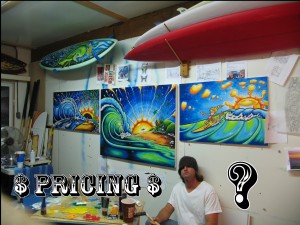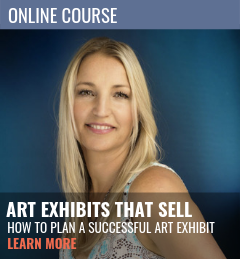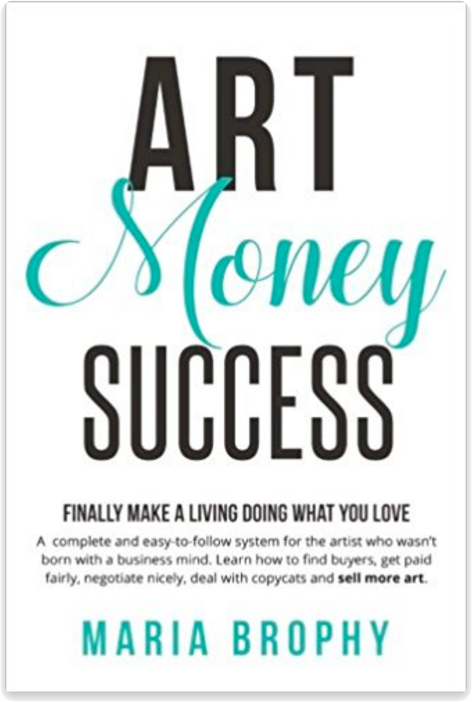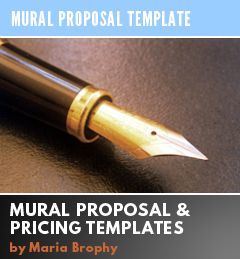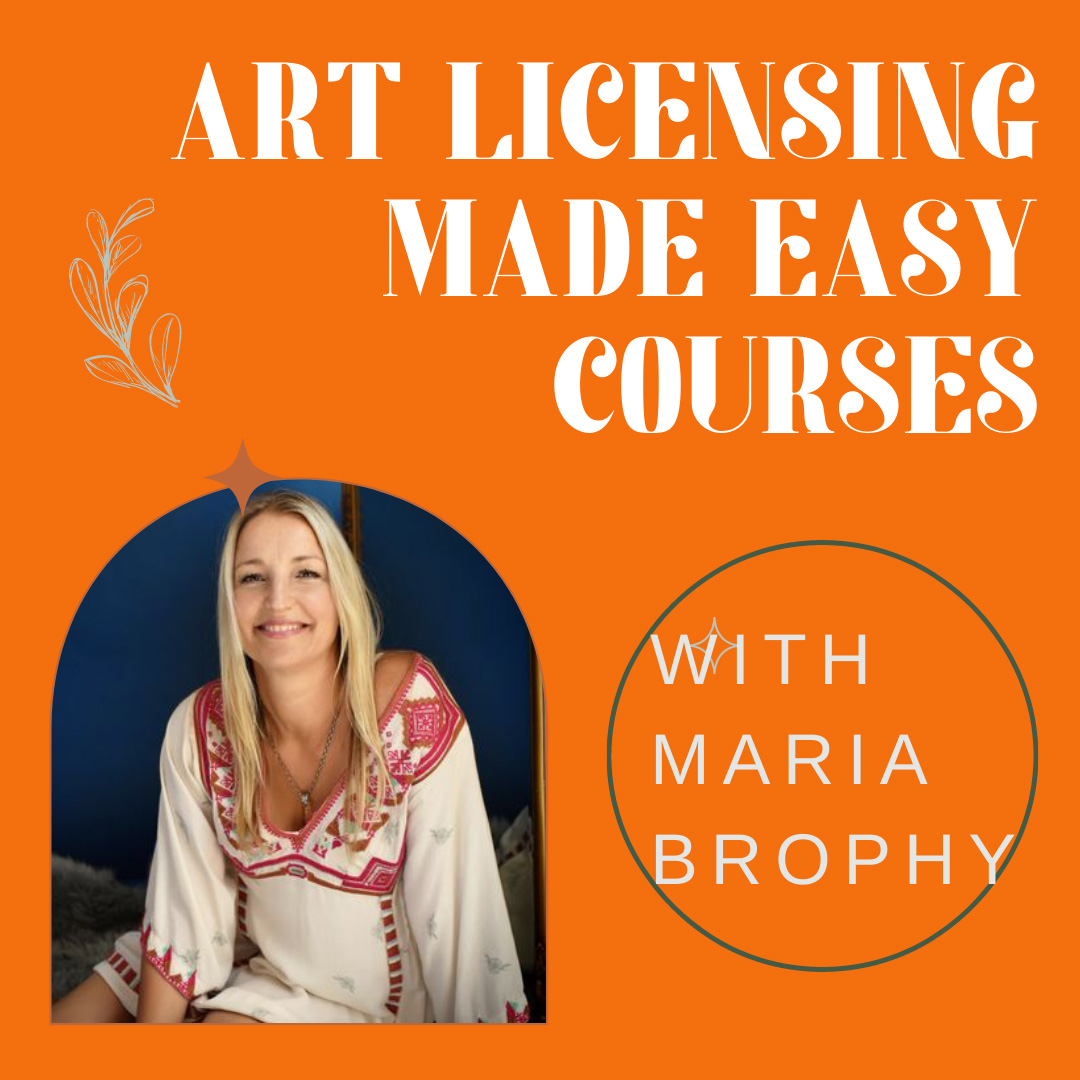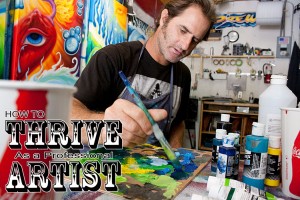 Last week Drew and I gave a lecture at Furman University titled “How to Thrive as a Professional Artist.”
Last week Drew and I gave a lecture at Furman University titled “How to Thrive as a Professional Artist.”
Our goal was to demonstrate to art students that being an artist is a very viable career, and that there’s no better time in history to be an artist than today.
We also wanted them to understand that to be a professional artist, one has to treat their business like a business.
But the most important take away from the lecture, according to the attendees, was that you can design your career to be what you want it to be. And that, in my opinion, is the most important message we can give to anyone in any profession.
Since most of my readers weren’t able to attend the lecture, I would like to share the content of it with you, as recapped below:
Not everyone knows what they want to be when they grow up. I didn’t realize until after my twenties that I wanted to do what I do now; work as an artist’s consultant and manager while traveling the globe.
Knowing what you want is important, if you want to live your own life rather than have everyone else decide for you.
Drew is a master at designing his life, so he gave the following tips on how to figure out what you want:
1 – Give yourself a Death Wish. Ask yourself “If I died today, what would I regret that I haven’t done yet?” For Drew, it was to surf big waves. For me, it was to back pack around the world. For you, it could be anything. It doesn’t matter what it is, the most important thing is to figure out what that one thing is that makes your heart flutter.
2 – Ask “where do I want to live” and “what am I good at”
If you’re living in a place that you don’t love, but you are aching to be in the mountains or at the beach, then you need to move to a place where you feel good. You can’t be happy if don’t love where you live.
Figuring out what you’re good at is hard for many people. We often take it for granted that we are a natural at something, because, well, it comes naturally to us, and so we think it’s too easy to be a career choice. For example, someone who is great at remodeling homes; that comes easy to them and they may not realize that you can make a great career out of helping others to remodel their homes.
3 – Ask “what do I really want?” Often we think we want something, because our parents or teachers told us it’s the way to think, but then find out later in life that we don’t want it after all.
Well meaning people tend to beat our crazy, awesome dreams out of us. Don’t let them do that to you.
Who would have thought that Drew and I would have been able to travel the world, with Drew painting wherever we go, and make a living doing that? Everyone told Drew he was nuts when he was younger. Now they’re writing about his lifestyle in magazines. Everything is possible.
WRITE IT DOWN AND IT WILL HAPPEN
When asking yourself these questions, write it down. Magical things happen when you put pen to paper and make a list of what you want out of life.
According to Jack Canfield, best-selling author of The Chicken Soup for the Soul book series, only 3% of the population writes down their goals. And can you believe that’s about the percentage of the people who are wildly successful (wealthy)!
The act of sitting down and thinking about what you want to happen is what gives you clarity. With clarity, comes the ability to make it happen.
That’s where the power in this exercise comes from; getting clarity on what you really want!
INTEGRITY/SELLING OUT
Most people have no idea what selling out means, but they sure as heck don’t want to do it.
The best way to keep your personal integrity as a professional artist is to make sure you never do anything that goes against your personal values in exchange for money. For every single one of us, selling out has a different meaning, because we all have different values. Only you can determine if you are selling out or not; no one else can decide that for you.
Pricing artwork can be so difficult at times; art is not a widget with fixed costs! But, with a little thought you can create a pricing strategy that works.
A professional artist will have a well-thought-out pricing system that is consistent and makes sense to their clients.
The pricing method that works well for us is a square inch system. For details on a square inch pricing strategy, refer to my post titled HOW TO PRICE YOUR ORIGINAL ARTWORKS.
A consistent price structure, laid out on a price sheet, will not only give you confidence when pricing your works, but will also give your clients confidence that you actually know what you’re doing!
OUR BUSINESS MODEL
We have a unique business model that has enabled us to sell Drew’s art while supporting our family and traveling the world. We have several streams of income, broken down like this:
ART LICENSING – We currently license Drew’s art to over 30 different companies for about 300 different products. This is our bread and butter.
ORIGINAL ART SALES – We sell the original paintings of all the artwork Drew creates for art licensing, as well as commissioned projects.
CUSTOM ART – The painting of wall murals, motorcycles, surfboards, and any other thing that a client asks Drew to paint.
ILLUSTRATION & DESIGN – T-shirt design, poster art for events and advertising needs. This includes artwork that is commissioned by companies or advertising firms for events or projects.
INTERNET SALES – We sell art prints, “how to” DVD’s and books, as well as licensed products on www.DrewBrophy.com.
All of five of our income streams work together. For example, every painting that Drew creates is scanned and the digital file kept for licensing later. Then we sell the original paintings to collectors.
With the downturn of the economy a few years ago, we were very fortunate to keep our studio doors open while businesses around us were shutting down. We were able to survive the drop in income in some areas because we had income coming in from a variety of sources.
Having multiple streams of income helps to hedge against economic changes.
COPYRIGHTS
An entrepreneur/artist owns their copyrights from the moment that the artwork is created.
But, to get the most protection from United States copyright laws, in the event someone “steals” your art, you must register your artwork with the U.S. Copyright Office.
Read HOW TO FILE COPYRIGHTS AND KEEP TRACK OF THEM for details on this.
MONEY MATTERS
My accountant once said “Maria, if you aren’t making a profit, then what you have is a hobby.”
To thrive as a professional artist or a professional anything, you have to make a profit and keep your cash flowing.
One way to ensure the cash is flowing is to have solid pricing and payment policies in place.
Our payment policies have always been to first quote a project or commission, get a 50% deposit, then begin and finish the work. Once the work is completed, final payment is due. Once paid, the client gets the digital files or the original or whatever it is they paid for.
We strongly recommend this payment policy. It’s the only way to 100% avoid being unpaid for work done. In other words, it’s your insurance against being ripped off. I know too many artists who have put in weeks of work only to have a client disappear and never pay them.
Read HOW TO NEVER GET RIPPED OFF AGAIN for details on this topic.
BEING A PROFESSIONAL ARTIST IS A VIABLE CAREER
Drew talked about how being an artist is having the ability to think differently, more like a child when everything is new and anything is possible.
An artistic mind combined with knowledge in any field is powerful.
For example, Steven Jobs applied his artistic mind to technology, and he changed the world with that. Frank Gehry applied his artistic mind to create buildings that engineers said could not be built.
Being an artist is absolutely a viable career. Here’s how to make it happen:
1 – Discover what you want (write it down!)
2 – Educate yourself in that medium or field, and
3 – Apply tried and true business practices.
This is the formula that will allow you to thrive as a professional artist.
Please, share in the comments your challenges and triumphs in becoming a professional artist. I would love to hear your thoughts on this.
Maria






